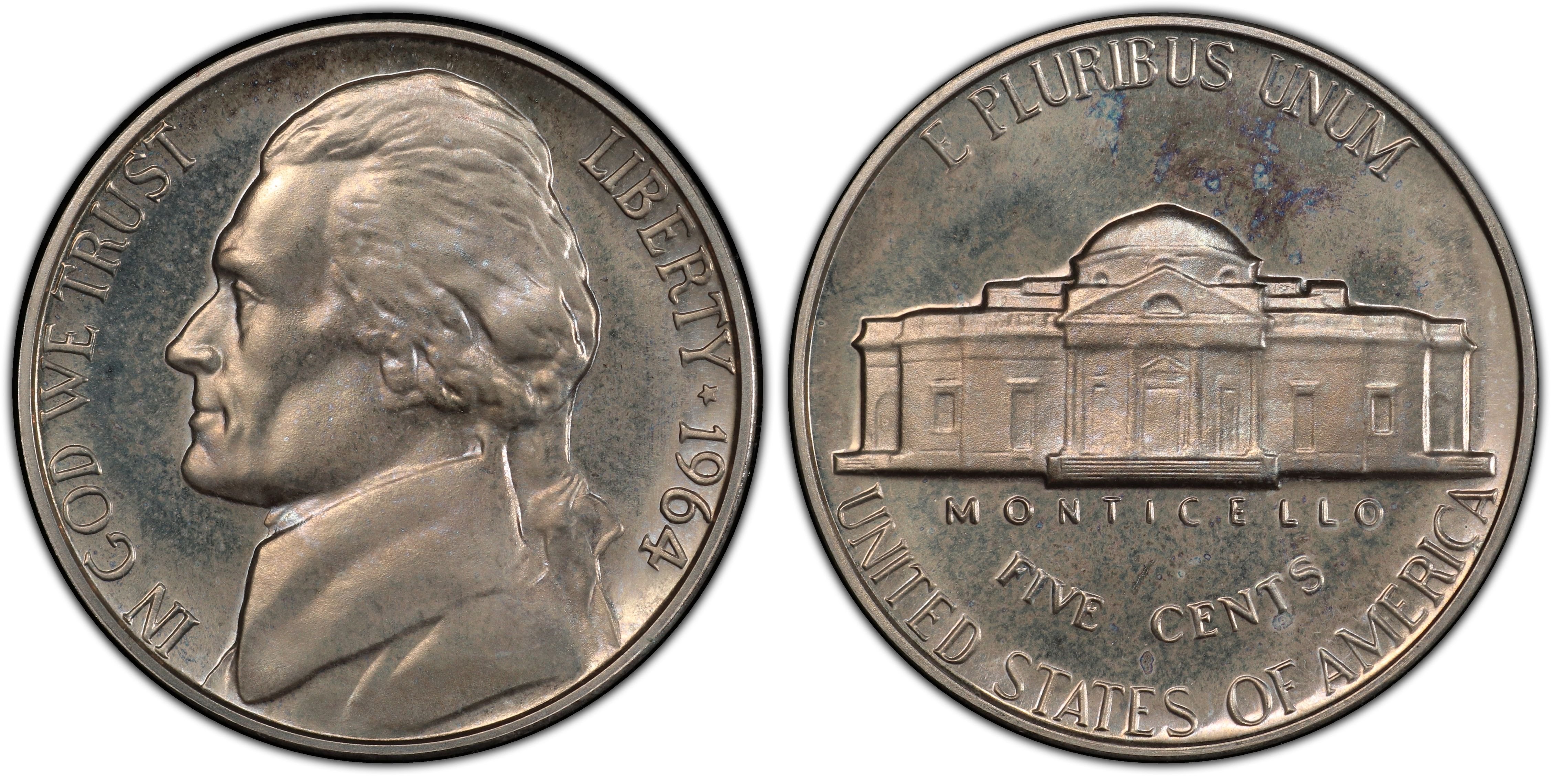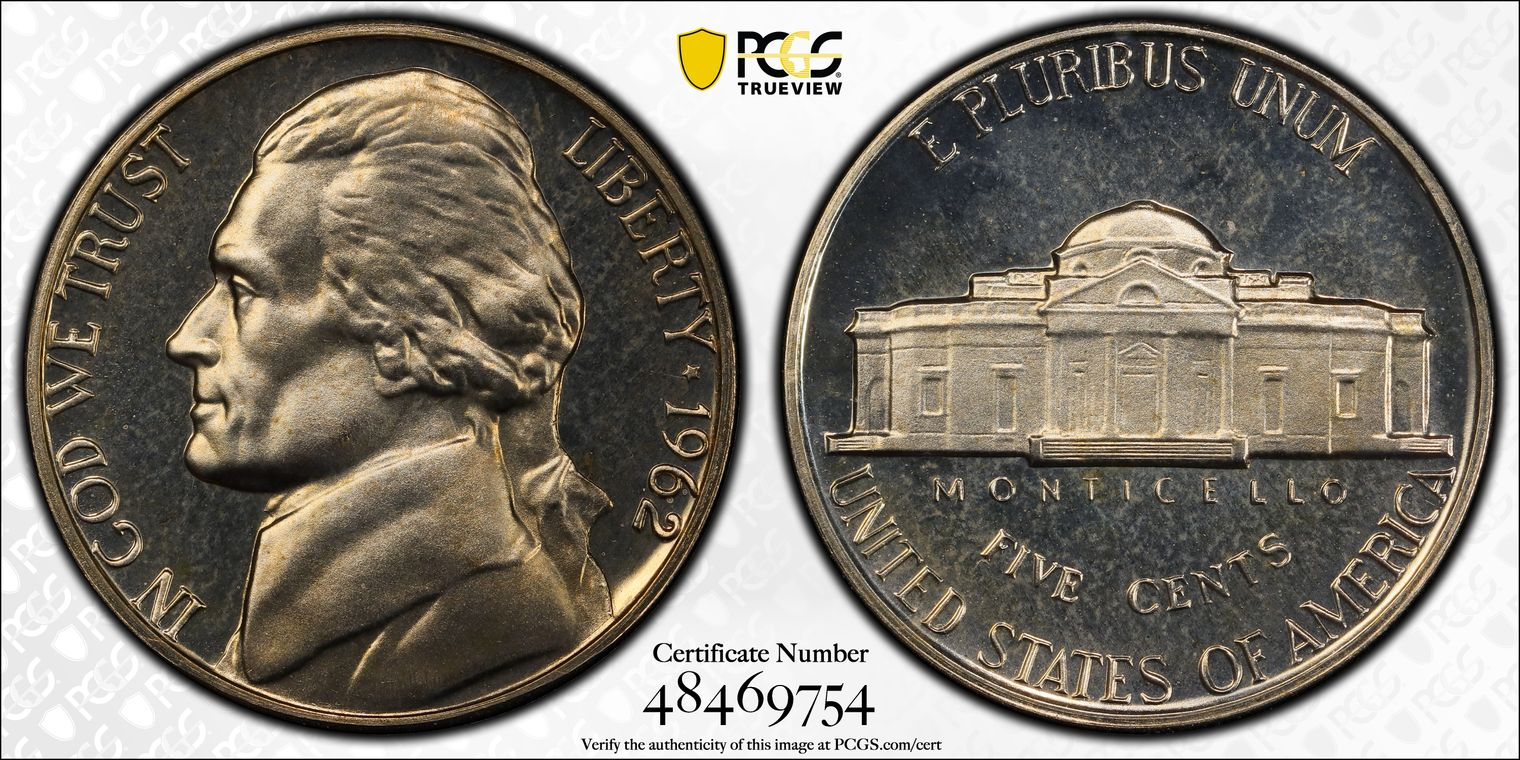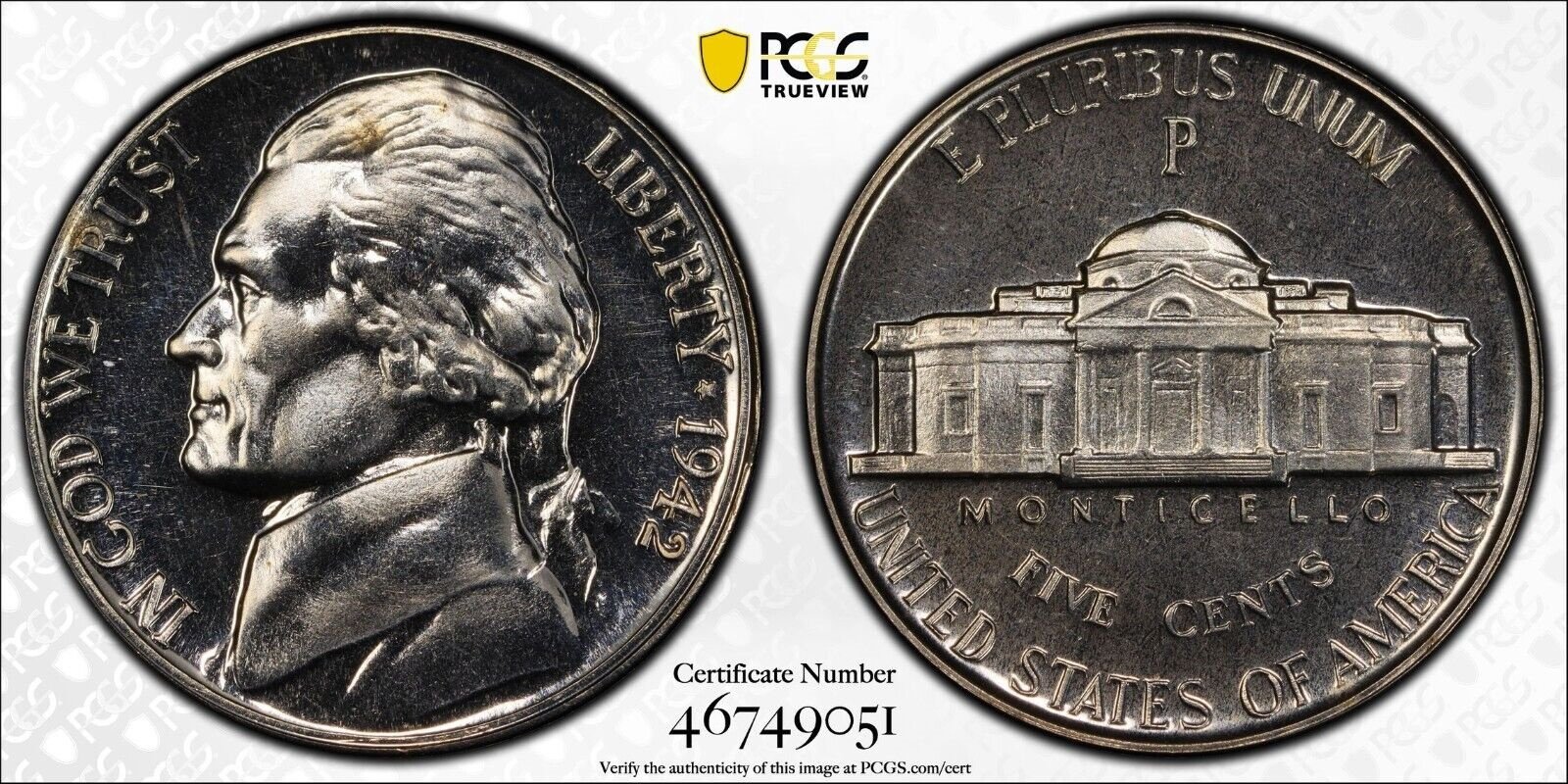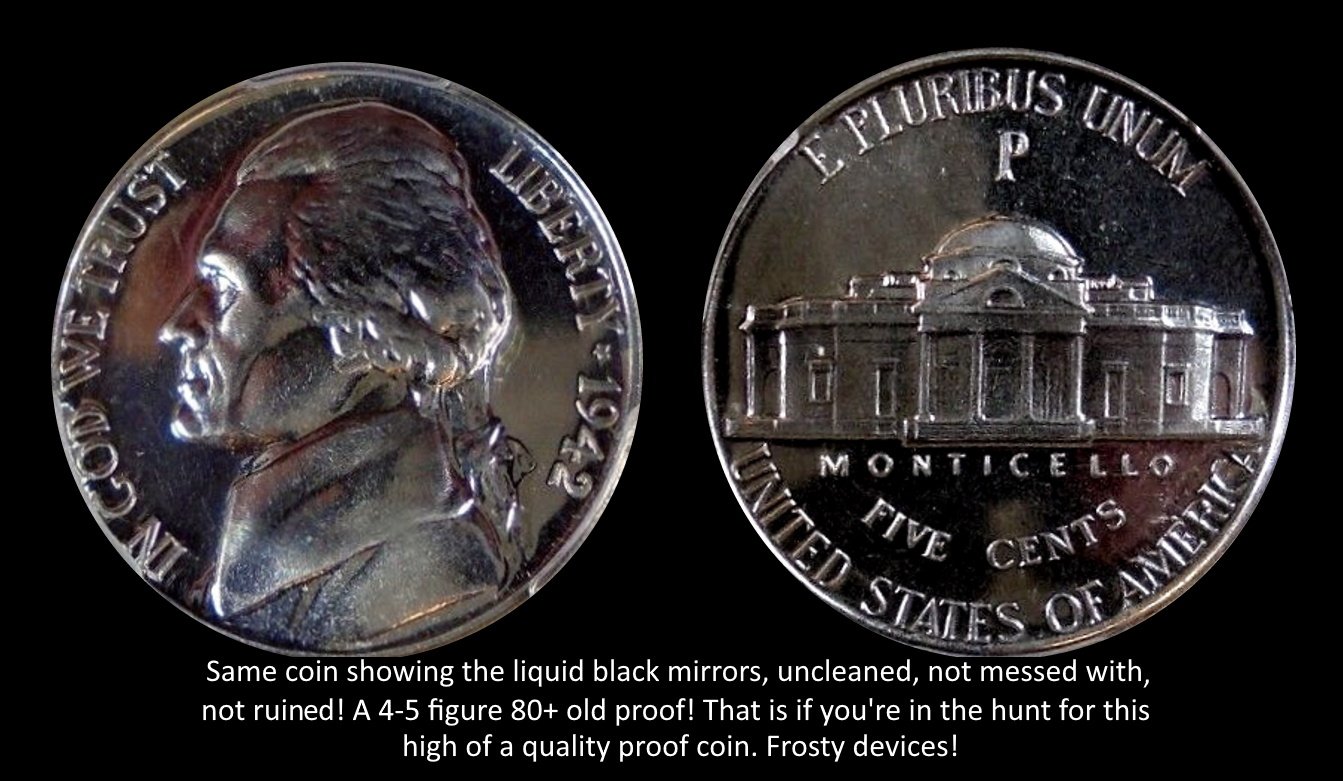Your thoughts on these two nickels.
 SanctionII
Posts: 12,704 ✭✭✭✭✭
SanctionII
Posts: 12,704 ✭✭✭✭✭


2
 SanctionII
Posts: 12,704 ✭✭✭✭✭
SanctionII
Posts: 12,704 ✭✭✭✭✭


Comments
I think I would like the '62 better in hand than the 64. Both have nice contrast, with the '62 seeming to be especially nice in that regard.
“We are only their care-takers,” he posed, “if we take good care of them, then centuries from now they may still be here … ”
Todd - BHNC #242
My respect for the OP is a ten.
My thoughts on both nickels hover around a three.
The 64 has a strange look to it.
Successful BST with ad4400, Kccoin, lablover, pointfivezero, koynekwest, jwitten, coin22lover, HalfDimeDude, erwindoc, jyzskowsi, COINS MAKE CENTS, AlanSki, BryceM
Well I think a quick dip for both would have done wonders for the coins. There is probably not enough upside to have PCGS conserve either coin.
Here is my Washington Quarter Variety Registry Set
This is my Washington Quarter Proof Variety Registry Set
Here are two other nickels of the same dates as the two pictured above. These two nickels look very different from the two nickels pictured in the OP.
At first I thought the second pair of nickels shown were the same nickels above just with different lighting and I was going to eat my hat.
I then read the OP's comment and am grateful my cap shall remain intact.
I think this coin would clean up real nice.
I like the second pair. Not a fan of the, well for lack of a better word, milky-ness of the fields on the first two.
I will follow up with more interesting information about these four nickels tomorrow.
In the meantime I solicit more of your thoughts.
The two 1964 nickels both have the same grade, PF69DCAM.
The two 1962 nickels both have the same grade, PF66.
Per our host's price guide the 1964 nickels are worth 27.5 times what the 1962 nickels are worth. Do you agree?
These nickels illustrate, to an extreme degree, the subjective nature of coin grading.I
The 1962 nickel shown in the OP is mine, having been newly graded. I tried removing the haze on that coin, without success (sometimes haze on proof coins will not come off).
I submitted it as an experiment. I thought that since the 1964 nickel in the OP received a DCAM designation with it's haze my 1962 nickel would/should also receive at last a Cameo designation.
I was very wrong in my thought
The grading of these four nickels is perplexing, amusing, frustrating and funny at the same time.
If I showed this thread and the photos of the four nickels to friends of mine (or my wife and son) who are not coin collectors they would opine that coin collectors are very strange and weird. Perhaps we are.
Your thoughts on these four nickels?
it is difficult to show hairlines, frost and depth of mirrors with 1 picture making grading proof coins from pics impossible...
I'm sorry, but you're telling me that 1964 in the OP went 69DCAM? If that's true, I'd be sending that thing for a grade review.
FlyingAl.
Yes. You can see that nickel at Coinfacts. It is graded PF69DCAM.
My first thought is that you can't accurately grade MS or PF coins by photos. They need to be seen in person.
Both coins in the OP look as if they would have benefitted from a dip prior to submission to clear the fields of haze.
"Those who would give up essential Liberty, to purchase a little temporary Safety, deserve neither Liberty nor Safety," --- Benjamin Franklin
For the 1962 nickel in the OP, before I submitted it for grading I dipped the coin to remove the haze. Most of the time light haze on a proof nickel or silver coin will come off when dipped. But not always.
None of the haze was removed from this coin. Which is disappointing because underneath the haze is a high quality coin with frosted devices and mirrored fields.
With respect to not being able to grade coins (including proofs) from photographs, I completely agree. However with respect to the four pictured nickels in this thread, they have already been graded by our host.
Debates about these four nickels (around a Watercooler, roaring campfire or fireplace) would be centered around whether or not people agree with our host's subjective opinion (the grades/designations assigned to the nickels).
I suspect that if the four early 1960's Jefferson nickels were instead four proof Barber half dollars, the replies to this thread would many, varied and lively.
I note the presence of corrosion spots on the reverse of the first 1964 nickel. No way that it should be considered to be 69, or 68 for that matter.
I knew it would happen.
A decision was made to reflect the light for the 1962. Reflect a black background into the mirrors of the 1962 and all the devices and Jefferson and Monticello will be black as well. Which is not the ideal way to show a nonfrosty proof. As black as the 1964. But all the specks from any haze will show up in the photo as well, there's no-way to hide the fact corrosion has taken place/occurred to the coin. And any acidic cleaning of a coin will have removed fine particles from the once highly smoothed mirrored proof coins received from the day they were struck/made at a US mint and very likely make it worse, ruin the coin from my experiences.


The goal of collecting proofs is to find them with the most virgin unaffected mirrors possible. And this feat is virtually impossible, to locate that one example that has not been hindered by the environments it has been stored/subjected to for the last 60, 70, 80 years.
Here's a proof that has stood the times well, a recent acquisition in the last two years. Two different camera and lighting settings to illustrate my point. One can't take a picture like the coin below until one has the right coin to make it possible. In hand, the reverse does have a very light brown haze. The photos can be enlarged by right clicking and opening a new tab.
Leo
The more qualities observed in a coin, the more desirable that coin becomes!
My Jefferson Nickel Collection
1- All grading is entirely subjective ... from all the primary TPG's and the sticker service
2 - Images are sometimes impossible to grade from
3- I still like the '62 you showed first, and the '64 you showed second looks like a monster
4- The first '64 does not seem to be it's purported grade, but see note 1 and 2 above
“We are only their care-takers,” he posed, “if we take good care of them, then centuries from now they may still be here … ”
Todd - BHNC #242